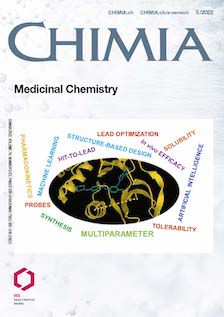Comparison of the Old and New - Novel Mechanisms of Action for Anti-coronavirus Nucleoside Analogues
DOI:
https://doi.org/10.2533/chimia.2022.409PMID:
38069712Keywords:
nucleosides, nucleotides, RdRp, chain termination, lethal mutagenesis, translocationAbstract
Over the past two and a half years the world has seen a desperate scramble to find a treatment for SARS-CoV-2 and COVID. In that regard, nucleosides have long served as the cornerstone to antiviral treatments due to their resemblance to the naturally occurring nucleosides that are involved in numerous biological processes. Unlike other viruses however, it was found early on during the search for drugs to treat SARS-1 and later MERS, that the coronaviruses possess a unique repair enzyme, an exonuclease (ExoN)[3] which rendered nucleoside analogues useless, thus negating their use.[4] During the current outbreak however, as both well-known and new nucleoside analogues were investigated or reinvestigated as a possible cure for SARS-CoV-2, several novel and/or lesser-known mechanisms of action were uncovered. This review briefly describes these mechanisms.
Funding data
-
National Institutes of Health
Grant numbers NIGMS T32 GM066706;NIAID R21AI135252
Downloads
Published
Issue
Section
License
Copyright (c) 2022 Joy E. Thames, Katherine L. Seley-Radtke

This work is licensed under a Creative Commons Attribution 4.0 International License.







